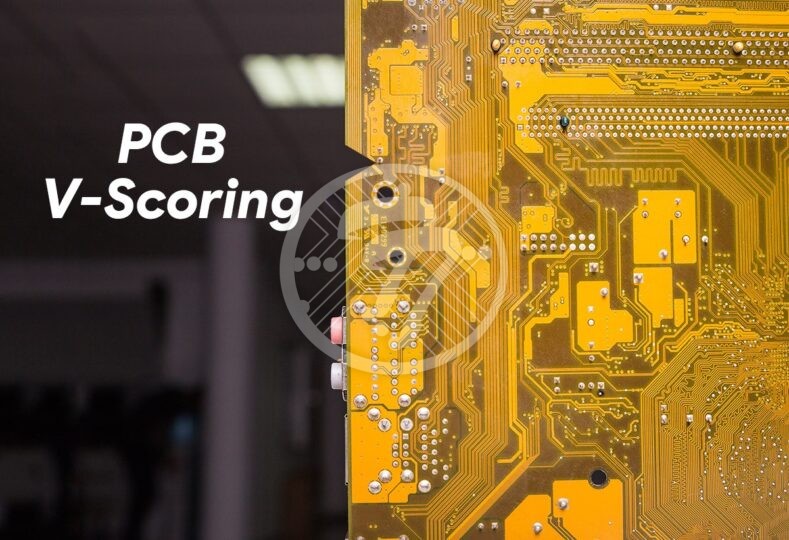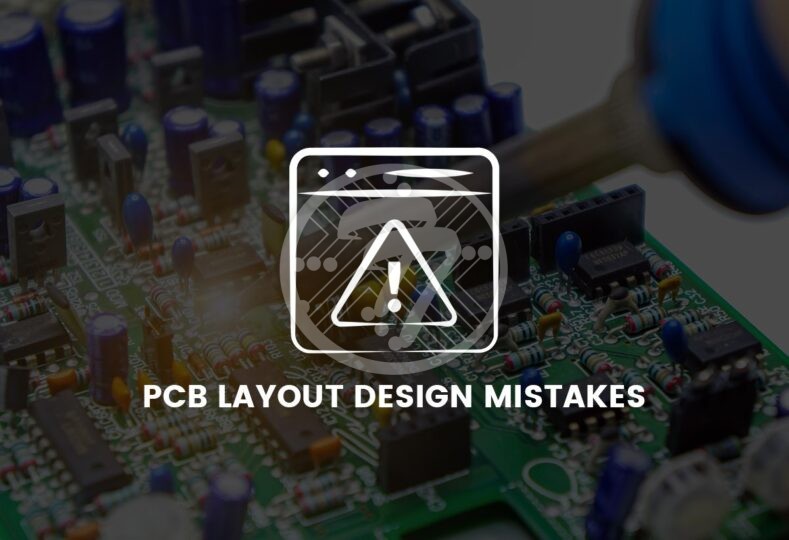Everything you Need to Know About PCB V-Scoring!

PCB V-scoring is a form of PCB panelization that allows you to both fit multiple PCBs onto a single manufactured board and allows you to separate the boards after assembly. It derives its name from the fact that it involves cutting a “V” shaped groove at the top and bottom of the PCB.
In order to V-score a PCB, what is required is a specialized scoring tool with a top and bottom blade.
The Requirement for PCB V-scoring
V-scoring is required to make the printed circuit board assembly process efficient. The process of V-scoring ensures that the assembled boards can be separated using minimal pressure.
Importantly, V-scoring helps with the following:
- Making efficient use of the board space.
- Reducing manufacturing cost by making several PCBs on one board. It also helps with putting two or more related circuits on the same assembly that aids in efficient sub-assembly. Depaneling machines are also relatively inexpensive. Besides, they are portable and not high on maintenance.
- Saves time as you can easily separate parts from a completed assembly. The process of V-scoring allows you to put components on each section of the board in a single run. Later you can simply separate the boards making the PCB assembly process both cost as well as time-efficient.
Challenges of PCB V-Scoring
- V- scoring is restrictive in terms of panel design. V-groove isn’t the best option for designs where the components are too close to the edge.
- It also necessitates a clearance of 0.05 inches between the components and V-grooves. Tall components, particularly, must be placed away so that the cutter doesn’t come in their way. Similarly, components with large connection areas should also be placed away from the groove.
- V-grooves can impact the structural integrity of the PCB leading to warpage or being caught in the wave-solder machine. Adding jump scoring to the leading and trailing edges of the array, help to strengthen it.
How do you specify PCB V-Scoring?
The PCB V-score can be specified based on the depth of the score or looking at the cross-section.
The standard way to specify the V-score is to cut 1/3rd on top, 1/3rd at the bottom, leaving 1/3rd of the web in the middle. Manufacturers are known to offer a 90 degree and 30 degree score as well. While the ninety-degree score is known to break easier than a 30-degree score, it takes more space on the layout.
General Rules for PCB V-Scoring
The general rules of the thumb for effective PCB V-scoring are as below:
- The spacing between the boards should be 0 mm.
- The minimum PCB footprint size for V-scoring is 75mm x 75mm, and the maximum size is 450mm x 1245mm.
- V-scoring should go straight across the whole board, although floating vertical and horizontal lines are also possible.
- Spacing between the V-scoring line and the outline of the PCB should be at least 0.35mm.
- The board thickness of a V-scored board should be at least 0.6mm.
PCB V-SCORE VS. TAB ROUTING PCB PANELS
The choice of V-scoring versus tab routing largely depends on the PCB design. The following factors would come in handy in making the right choice:
- Shape of the board – V-scoring works well for square or rectangular boards while tab routing lends itself to unusual shapes.
- Edge components – For edge-hanging components, tab-routing is a far more workable option.
- Edge Quality – V-scoring results in rough edges. If edge quality is of importance, once again tab-routing will be preferable.
- Time – Tab routing takes more time and labor to set up. V-scoring, on the other hand, is far quicker.
- Waste material – V-scoring tends to waste far less material than tab-routing and is therefore more cost effective.
To Sum Up
PCB V-scoring is a major source of cost advantage to electronics manufacturers. It takes away the need for the space needed for routing and therefore offers the ability to add an increased number of rows to the fabrication panel. Wasted laminate is thereby eliminated. Not only does V-scoring save money but also time, as it streamlines the fabrication and processing method.
Technotronix is one of the leading PCB manufacturers in the USA. We have over 4 decades of experience in providing innovative PCB manufacturing services using modern technologies & the latest machinery. We are adhering to strict high-quality standards and compliant with the RoHS (Restrictions of Hazardous Substance) directives. We can fulfil the varied needs of our customers from the simple board to the most complex board for PCB prototype to production. For more information, contact us via email at [email protected] or call us on 714/630-9200.









